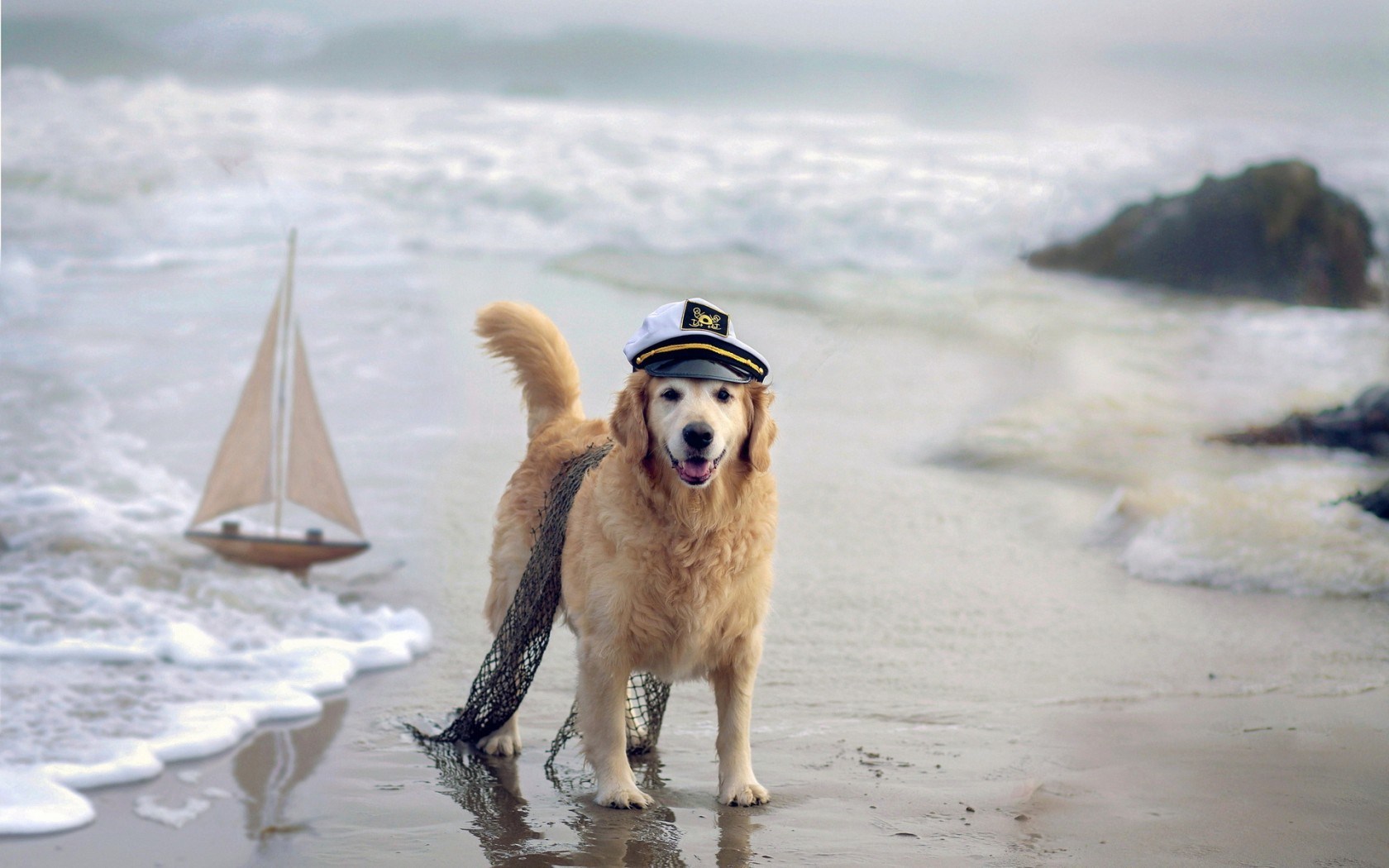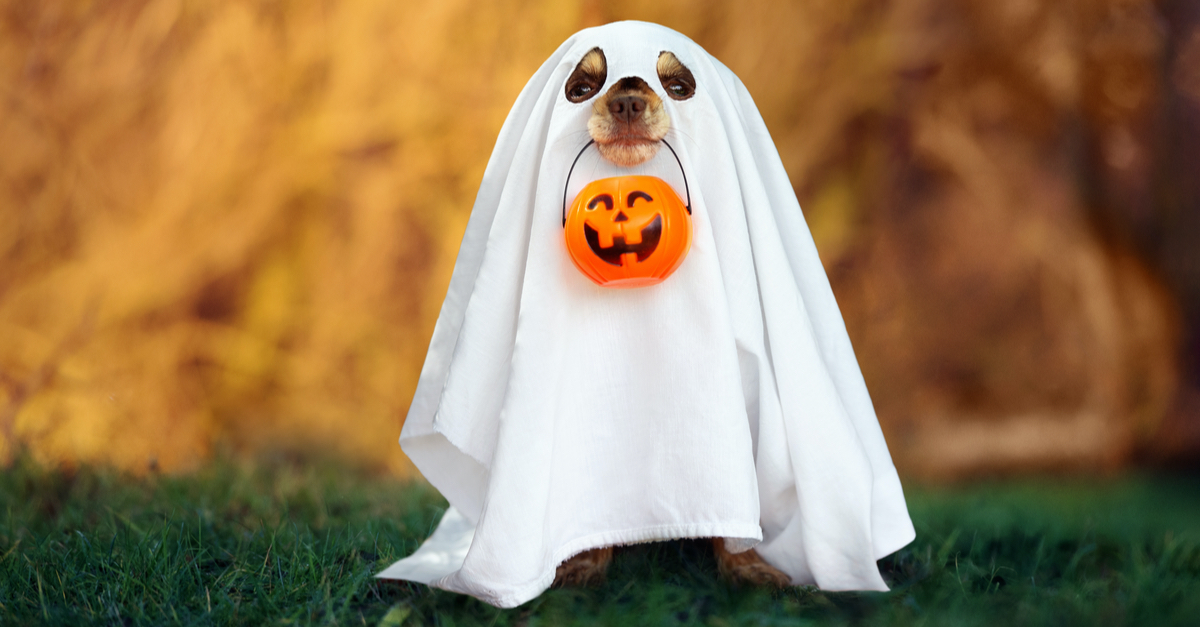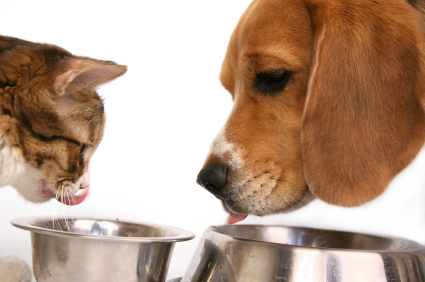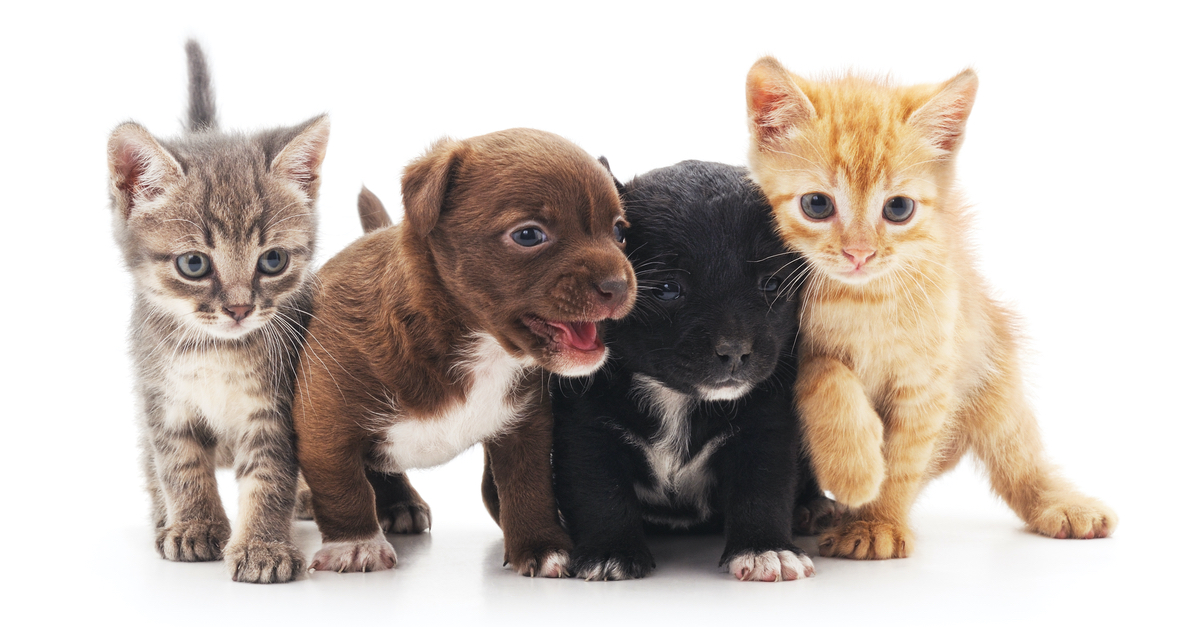Stash the Treats
The candy bowl is for trick-or-treaters, not Roxy or Diesel. Several popular Halloween treats are toxic to pets. Chocolate in all forms—especially dark or baking chocolate—can be very dangerous for cats and dogs, and sugar-free candies containing the sugar substitute xylitol can cause serious problems in pets. If you suspect your pet has ingested something toxic, please call your veterinarian immediately.
Watch the Decorations and Keep Wires Out of Reach
Be aware of which decorations pose threats. Some hazards are obvious, like lit candles (fire hazards and toxic to birds if scented). Other potentially dangerous decorations include rubber eyeballs (choking risk), glow sticks and fake blood (possible poisons), fake cobwebs (can choke or entangle pets and wildlife), potpourri (toxic to birds) and strung lights. Watch out for those candy wrappers and plastic packaging too!
Pumpkin can be good for dogs and cats, but too much can cause digestive issues and rotting pumpkin may harbour bad bacteria.
Electric and battery-powered Halloween decorations are certainly safer than open candles, but they still can present a risk to pets. Pets who chew on electrical cords can receive a possibly life-threatening electrical shock or burn. Batteries may cause chemical burns when chewed open or gastrointestinal blockage if swallowed. Shards of glass or plastic can cause lacerations anywhere on the body or, if swallowed, within the gastrointestinal tract.
Be Careful with Costumes
For some pets, wearing a costume may cause undue stress. Do not put your dog or cat in a costume unless you know he or she loves it. If you do dress up your pet for Halloween, make sure the costume does not limit his or her movement, sight or ability to breathe, bark or meow. Check the costume carefully for small, dangling or easily chewed-off pieces that could present a choking hazard. Ill-fitting outfits can get twisted on external objects or your pet, leading to injury. Be sure to have your pet try on the costume before the big night. If he or she seems distressed or shows abnormal behaviour, consider letting your pet wear his or her “birthday suit” or don a festive bandana instead.
Keep Pets Calm and Easily Identifiable
A dog’s natural instinct is to protect their home or to alert you that a stranger has arrived. Cats typically prefer a quiet environment with their family. Trick-or-treaters continually knocking on the door or ringing the bell can be very stressful to both dogs and cats. All but the most social dogs and cats should be kept in a separate room away from the front door during peak trick-or-treating hours. While opening the door for guests, be sure that your dog or cat doesn’t dart outside. And always make sure your pet it wearing proper identification—if for any reason he or she does escape, a collar with ID tags and/or a microchip can be a lifesaver for a lost pet.
There will be more people out than normal after dark, and dark or black pets can be especially at risk of being run over. What’s even scarier is that a significant number of black cats disappear every year on Halloween –due to some not so nice people. Don’t take any risks, keep them indoors!
You can also consider medication to keep your pet calm – either scheduled drugs prescribed by your vet or OTC medications, like catnip, pheromones (e.g. Feliway), supplements (e.g. Calmeze) or CBD oil.
Another option is music – Hendel seems to be a favourite with cats, while dogs like reggae, soft rock and classical music. For clinically tested calming music, try streaming iCalmDog and iCalmCat. White noise also works well.
The post Halloween and your Pet appeared first on Tails Pet Blog.
Here are some of the ingredients in sweets that can be harmful to your pet:
Sugar
If your dog gets hold of a tiny bit of a sugary snack or you give them the occasional dog-safe fruit, it shouldn’t hurt them. But eating a lot of sugar or many sugary treats over a long period of time may cause numerous health issues for your dog, like upset stomach, obesity, metabolic changes, and diabetes. In more severe cases, your dog could even end up with pancreatitis.
Chocolate
chocolate contains both caffeine and theobromine which can affect your pet’s heart, liver, kidneys and nervous system.
Xylitol
this artificial sweetener that you find in sweets, stimulate the pancreas to secrete insulin and can lead to low blood sugar; it can also cause liver damage.
Raisins
animals like raisins and grapes a lot, but it can lead to kidney failure and death!
Nuts
Macadamia nuts and pistachios are very rich in fat and can cause pancreatitis. In addition, macadamias contain a toxin that might result in neurological symptoms, lie muscle tremors and muscle weakening. Pets have difficulty digesting almonds, walnuts and pecans and these nuts are large enough to cause an intestinal obstruction for smaller animals.
At Pet Heaven we stock a variety of treats that are safe for animal consumption – e.g. Cool Dogs Ice cream, biscuits, treats, hooves, biltong etc.
The post Halloween and why sweets are not good for our pets appeared first on Tails Pet Blog.
Water is the main component of healthy, living cells of the body. The purpose of water for pets (and humans) is to carry important nutrients into and out of the cells of the body, aiding in digestion and the absorption of nutrients. It also regulates body temperature, lubricates joints, improves cognitive function, and cushions the brain and spinal cord. Every important bodily function requires water. Without water, your pet’s body will not function properly. More specifically, your pet will dehydrate.
How much water does my pet need?
There are many factors that influence how much water your pet should be drinking, e.g. activity level, diet, weather, disease conditions.
If your pet is eating wet food or a homemade diet, he/she might drink less water, because there is moisture in the food. If he/she stops drinking or has a dramatic decrease in water intake it might mean that he/she is sick and needs to go to your vet.
Higher activity and hot weather can increase your pet’s water requirements because water is lost with excessive panting and salivation. Some disease conditions (e.g. kidney disease; metabolic disorders like diabetes; cancer) and pregnancy/lactation can also increase your pet’s water intake.
What happens if a pet does not get enough water?
As mentioned previously, many important body functions require water, so without an adequate supply, your pet can become quickly become ill and dehydrated. Organs will eventually become damaged with sustained water deficiency, and if it lasts long enough, the kidneys, liver, and other organs will begin to shut down. Death will follow shortly after.
How do I check my pet for dehydration?
Follow these steps to see if your pet is dehydrated:
- Gently pinch the skin of the forehead or between the shoulder blades.
- Pull the skin up gently and release it.
- Watch for the skin to fall back into place.
- The skin should quickly return to place without any hesitation. If dehydration is present, the skin will slowly return or may even stay up for a time before falling back into place.
Other signs of dehydration in pets:
- Gums appear dry, sticky, or pale
- Eyeballs appear sunken
How can I insure that my pet is well hydrated?
Paying attention to your pet’s water intake is important all year round, and especially during the hottest months of the year. Here are some simple tips;
- Provide fresh, clean, cool drinking water at all times.
- Provide multiple water bowls in different locations throughout the house.
- Invest in a drinking fountain for pets; cats especially like running water.
- If your cat likes to drink from a dripping tap, let her.
- Add canned food to your pet’s diet, which contains more water than kibble.
- Teach your dog to drink from a water bottle, or take collapsible water bowls in your car and on adventures.
- Location matters! Sensitive cats need water bowls in low traffic areas.
- Test different bowl types. Some cats have preferences for what type of bowl they will drink from.
How often should I clean the water bowl?
Water and food bowls should be scrubbed with soap and water daily. Since these bowls are in contact with food and your pet’s saliva, they tend to be good places for bacteria to grow.
Bowls should be smooth and easy to clean, without nooks and crannies or even scratches where bacteria can hide and survive.
The post Hydration: How much water should my pet be drinking? appeared first on Tails Pet Blog.
Allowing a kitten to explore outside for the first time can be stressful for both kitten and owner!! Here’s how to successfully introduce a kitten to the outside world.
What are the benefits of letting my kitten outside?
Cats make wonderful house pets and as long as they have enough stimulation, they can live long and healthy lives without ever venturing outside.
But, having said that, there are many benefits to letting your kitten outdoors: it allows them to practice their natural instincts to hunt and explore, encourages exercise and mental stimulation and can reduce stress in your pet.
When can I allow my kitten to go outside? What do I need to keep in mind?
Kittens are usually vaccinated at 9 weeks, 12 weeks and 16 weeks. These vaccinations are vital to protect them against diseases that can be caught form other cats. The vaccinations need time to be fully effective, so wait till at least 2 weeks after the second vaccination before letting your kitten out. This should be in a secure garden and under the owner’s careful supervision. It is also highly recommended that any new kitten owner has their pet microchipped.
Keep in mind that kittens can get pregnant from as early as four months old so, if your pet is likely to come into contact with other cats, you should consider having your pet spayed.
What are the risks of allowing my kitten outside?
At any age, a cat faces a number of risks whenever they venture outdoors. Whether it’s other cats or animals, poisonous plants or the risks associated with busy roads, the outside world makes for a potentially hazardous environment.
But for many owners, seeing their pet explore the world outside for the first time is a very rewarding experience.
How can I prepare my kitten for their first visit outside?
Train your kitten to recognise its name before allowing them outside. You can do this by calling their name whenever you feed them or give them a treat – this helps develop a positive association with their name being called and means they’re more likely to respond when you’re outdoors.
When you’re ready to go outside, I’d suggest picking a quiet day around the house so your kitten is as calm as possible. Try leaving the door to the garden open for a little while before the morning feed to encourage your pet to explore in his or her own time. Stay close by and, after a few minutes, bring them back indoors and reward them with a treat. Repeating this over a few days will help build your kitten’s confidence.
How can I kitten-proof my garden?
Most cats cope pretty well with the garden environment, but make sure you carry out common sense checks around your garden for things like sharp edges, rusty nails, especially in areas that might be tempting for your kitten to squeeze into.
Kittens are very inquisitive and can fit through the tiniest of spaces, so make sure you keep an eye out for those areas you might not otherwise check. Also check for any holes in fences, items such as string that they could get caught up in, and any poisonous plants.
Also look for toxic items such as slug pellets, poisonous plants (such as daffodils and lilies), rodenticides and toads.
What about other cats?
Cats can sometimes squabble, so check your pet regularly for any signs that they may have been in a fight. Look out for things like bite wounds that can sometimes become infected or form abscesses if left untreated. And to avoid unwanted pregnancies, my advice is to have female kittens spayed at six months old.
Puppies
Taking your puppy outside for the first time can also be a stressful experience, but it’s a big part of any dog’s development as they get accustomed to other people, other dogs and the sights, smells and sounds of the wider world.
If you have a garden or outside space that’s safe, secure, clean (no faeces or junk lying around and there was no parvo or other transmissible diseases in your garden for the last year) and free from other dogs, then you can let your puppy out immediately.
When you can take your puppy outside for their first walk depends on their vaccination status. Vaccinations provide invaluable protection against several diseases that your puppy is likely to be exposed to, such as canine distemper virus and canine parvovirus. Having your puppy vaccinated will protect them against these potentially fatal diseases and stop them from passing disease on to other animals, so it is important to get your puppy vaccinated as soon as possible.
Puppies are usually vaccinated at 8, 12 and 16 weeks of age. The vaccinations take time to take effect, so avoid taking them outside until at least 2 weeks after the second vaccination.
What’s the best way to introduce my pup to the outdoors?
Ideally, introduce them to the outdoors in an enclosed space or garden that’s been checked for potential hazards. Take it slowly, stay close by and make your visits short so your pup gradually gets used to it.
Letting your pup explore the garden helps with toilet training, learning about what they can and can’t play with and is good for their general development. Before taking your pup for their first walk, I’d suggest also getting your pup used to wearing their collar or harness by fixing it loosely while indoors.
How should I prepare my garden?
It’s important to make sure your garden is safe by removing any potential hazards. This includes things like rat or slug pellets, pine cones that they can choke on, and sharp edges, broken glass or exposed nails that could cause injury.
Also block any holes in fences that a puppy could escape from, cover up water features and ponds and secure dustbin lids too.
What should I do on my first walk?
Taking your pup for their first walk is a big moment for both dog and owner, so take things steady, remain relaxed and keep a careful eye on your pup at all times.
There’s a lot for your pup to take in, so I always suggest keeping the first walk short – around five to ten minutes. This will prevent your pup from getting overwhelmed or anxious. Let your puppy set the pace and stop whenever he or she wants to.
If your puppy becomes scared, try not to comfort them too much. By doing so, you might make them think that there’s a good reason to be worried and thereby reinforce their anxiety. Instead, remain calm and move on. If your puppy becomes distressed then I’d recommend returning home for the day.
What’s the best way of dealing with traffic?
Road safety is crucial. From the very first walk, teach your puppy to stop at the curb and wait for your instruction. Again, remain calm and allow your pup to get used to the sights and sounds of passing traffic.
What about other dogs?
If your puppy is confident enough, let them greet other dogs. But keep the meeting short and try to avoid any over-excitement. If your pup is very nervous, don’t approach other dogs to begin with and allow your pet to build more confidence.
The post How to get your kitten and puppy used to being outside appeared first on Tails Pet Blog.
Most puppies and kittens are weaned by the time they arrive in their new home at 7 to 9 weeks old. At this time, nutrition for puppies and kittens must be formulated to support the growth and development of a new pet. Plus, the nutrition needs will change over the course of the first year and when the puppy or kitten matures into a full grown dog or cat. Cats and small/medium sized dogs will reach maturity from approximately 10-12 months, while large and giant breeds of dog will reach full size and maturity between 18-24 months.
The first step is to look at the packaging. The bag should provide information on the lifestage the diet is intended to support. In this case the label should state that the food is suitable for puppies (or kittens). The label should also include an ingredient list as well as the guaranteed analysis of the food (the amount of nutrients in the food).
5 Nutrients Puppy and Kitten Food Should Include
1. Energy
Puppies and kittens grow the most between 3 and 6 months, and their energy needs during the first 4 months are about twice that of mature animals of the same size. This metabolic energy requirement reduces gradually after the first 4 months. It also coincides with a second reduction in energy requirement following neutering (which is usually at 6 months of age). If calories are not reduced after neutering, the development of obesity is likely. By working with your veterinarian, you can look at the pet’s body condition score (BCS) to determine the best caloric requirements for your puppy or kitten.
Because of the high energy needs of pets during development, diets that support growth are generally higher in fat than maintenance diets for adult animals. Dietary fat provides not only essential fatty acids but also twice the amount of metabolic energy per gram than do protein and carbohydrates. Thus, increasing the amount of fat supplied in the diet allows for smaller amounts to be fed in order to meet energy requirements. Diets low in fats may be unable to provide the necessary nutrients in a small enough volume for the patient to consume.
2. Protein
Good nutrition for puppies and kittens includes protein. Protein provides essential and nonessential amino acids, as well as nitrogen, to the diet. Dietary protein provides structure for hair, nails, ligament, tendons, cartilage, and new tissue during growth. It also helps maintain a healthy immune system by supporting production of immunoglobulins and antibodies. Kittens require more protein than puppies and have 11 essential amino acids, compared to 10 in puppies. A high-quality protein source supplies all the essential amino acids, whereas a poor-quality protein source is limited in certain essential amino acids and will necessitate a second protein source to provide all the necessary amino acids.
3. Calcium and Phosphorus
Commercial foods should have the appropriate ratio of Calcium to Phosphorus (Ca:P between 1.1:1 and 1.5:1) to help maintain healthy levels in your pet. If you are feeding a properly balanced diet additional supplementation of Calcium is not required nor suggested, as too much of these nutrients is undesirable and may be harmful.
4. DHA
A good food with the appropriate nutrition for puppies and kittens will include this omega-3 fatty acid. It helps with retinal, neural and auditory development, affecting training and learning in puppies and kittens.
5. Antioxidants
Vitamins and minerals (such as vitamins A and C, β-carotene, lutein, zinc, and selenium) that acts as antioxidants support immunity in your puppy or kitten and are essential to a heathy diet.
Feeding Frequency
For puppies, start with 3-4 feedings per day, depending on the size of your dog. Smaller breed puppies may need more frequent feedings than their larger breed friends for the first 3 months. After the puppy period, discuss feeding frequency with your veterinarian to determine the best schedule for your adult dog’s needs.
For kittens, “free-choice” feeding is recommended until 5 months, then switching to 3-4 meals per day for an additional month. Kittens are then often switched to 2 meals per day through adulthood.
Transition from one feed to another
When changing foods, it is important to transition from one food the next gradually. Add a little bit of the new food each day, while reducing the amount of the old food over a 5-7 day period. This will help minimize digestive distress, and help your pet transition and accept the new food more easily.
Size and Life stage nutrition
Be sure to purchase food that is appropriate for your pet’s size and stage of life. Kittens and small/medium breed puppies can be fed an adult diet from their first birthday. Larger breeds of dogs need to stay on puppy food until they are 18-24 months old.
The post How to start your puppy or kitten on a healthy diet appeared first on Tails Pet Blog.